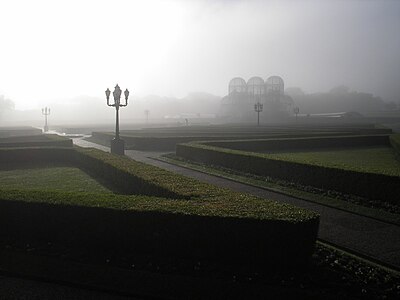Mist
Description
The only difference between mist and fog is visibility.[1] The phenomenon is called fog if the visibility is one kilometre (1,100 yards) or less. In the UK the definition of fog is visibility less than 100 metres (for driving purposes, UK Highway Code rule 226),[2] while for pilots the distance is one kilometre. Otherwise it is known as mist.
Mist makes a beam of light visible from the side via refraction and reflection on the suspended water droplets.
"Scotch mist" is a light steady drizzle.
Mist usually occurs near the shores, and is often associated with fog. Mist can be as high as mountain tops when extreme temperatures are low.
Freezing mist
Freezing mist is similar to freezing fog, only the density is less and the visibility greater. (When fog falls below 0 degrees Celsius in temperature it is known as freezing fog.) [3]
-
Mist lying in the folds of hills, Australia
-
Sunlight through mist on a crisp winter morning
-
Misty morning at Swifts Creek
-
Mist on a lake
-
Curitiba, Brazil
See also
References
- ^ http://www.rcn27.dial.pipex.com/cloudsrus/mistnfog.html
- ^ "Driving in adverse weather conditions (226 to 237)". www.gov.uk.
- ^ "WHAT IS DIFFERENCE BETWEEN ICE FOG AND FREEZING FOG?". theweatherprediction.com.





